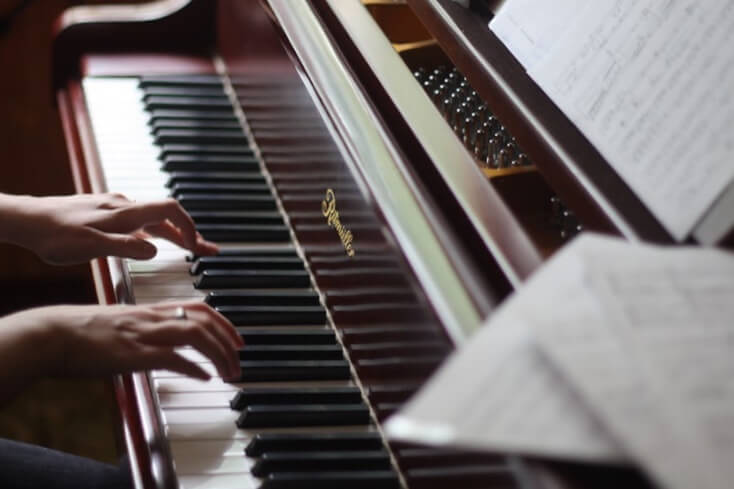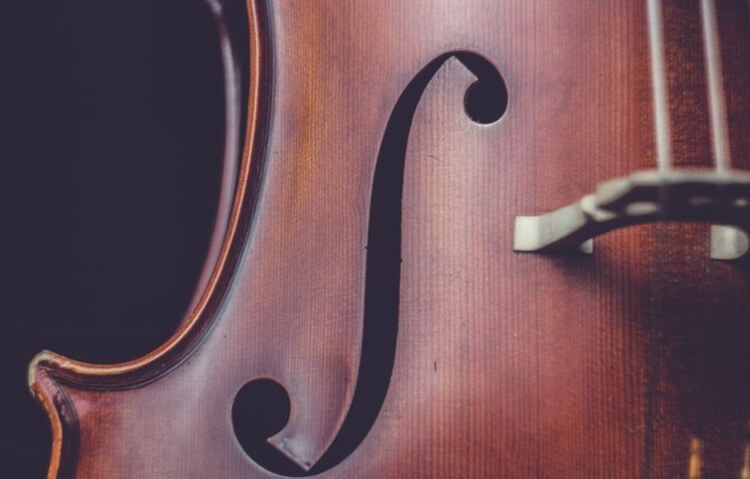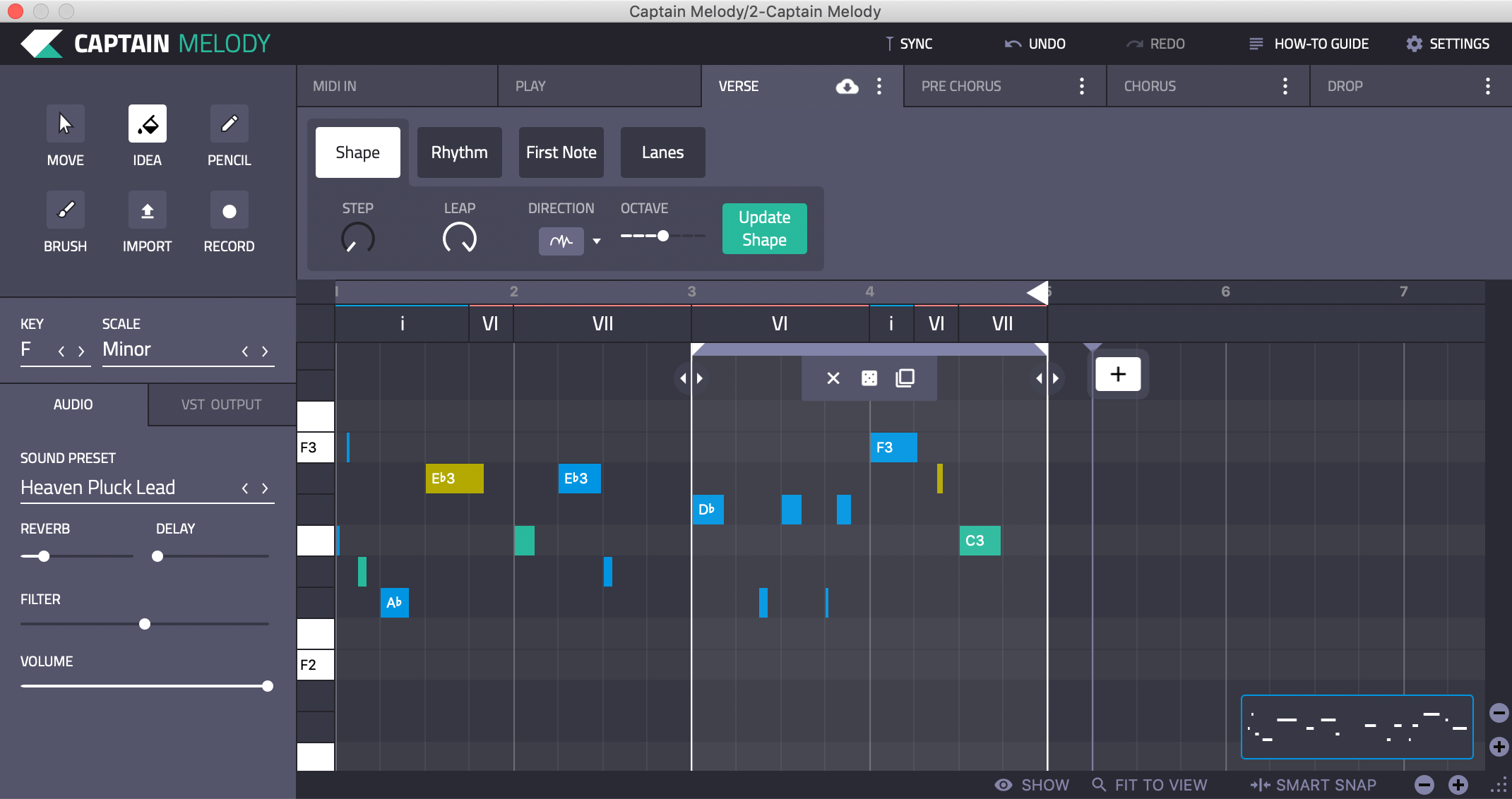The Nuts and Bolts of Counterpoint
By M. L. Wolf

Chances are that you have encountered this type of composition, perhaps without realizing exactly what it was! Music nerds love to talk about the contrapuntal style of a composition, leaving some of us wondering what we are missing out on. If you’ve listened to a Bach fugue, you’ve heard a brilliant example of counterpoint. This example of Bach’s Fugue in C minor gives an audio as well as a visual of counterpoint.
Simply stated, counterpoint is just a fancy term for one or more melodies that are added either above or below another melody and played together. The name counterpoint is derived from the Latin term contrapunctus; contra meaning counter (or another) and Punctus meaning melody. So melody against melody.
Counterpoint is a musical technique that’s most commonly seen in European classical tradition. It focuses primarily on the melodies of the piece and how they interact. The harmonies that are produced by the melodies being playing simultaneously are secondary to all the melodies.
Captain Melody 5.0
- Write melodies that suit your chord progression
- Connect the Melody plugin with Chords plugin
- Apply different rhythms
- Apply arpeggiators that move your MIDI notes
- Adjust the tension between the Chords and Melody
- Hear the melody played with 100+ different sounds
Counterpoint Styles
Counterpoint had humble beginnings in the Middle Ages, and gradually grew more complex throughout the centuries. It began simply as two voices moving in parallel motion, and has evolved adding contrary motion, more complex rhythms, melodic imitation, dissonances and polytonality. To better understand how counterpoint works let’s take a look at some examples in musical literature.
First we have monophony which is simply one layer or line; it’s a melody that everyone sings or plays at the same time. It can be sung or played in octaves, but it is only one single tune with no additional harmonies. The Gregorian Chant songs (sung prayers) of the Middle Ages employed monophony. This example, Dies Irae, is a famous 13th century Latin Catholic hymn.
Homophony is perhaps the best known style of musical writing. It is just one voice, plus accompaniment of some sort. (piano or guitar for example) and the name means to have one part or melody predominating.
Most pop music is written in the homophonic style. Here is an example of this from the Disney movie The Hunchback of Notre Dame ‘God Help The Outcasts’. For most of the song Esmeralda is singing solo with some violins for accompaniment. Later on around 1:15 the rest of the cast joins in with harmony.
Polyphony is where you have two specific voices happening at once. An easy example of this is a ‘round’. Think of “Row Row Row Your Boat” where one voice starts and then a few bars later the next voice enters singing the exact same tune the first first was singing. A good pop example of polyphonic writing is Chumbabrumba’s ‘Tubthumper’. An example of polyphony can be heard at 0:29 when the second melody is introduced and then at 2:20 you hear both melodies being sung simultaneously.
Lastly we have heterophony where you hear two or more versions of the same melody concurrently. Come On Eileen’ by Dexy’s Midnight Runners is a good rendition of the use of heterophony. Listen at 3:05 for a very clear example!
Species Counterpoint
In 1725 Johann Joseph Fux published ‘Gradus ad Parnassum’ (Steps to Parnassus) where he breaks counterpoint down into five species of counterpoint. This document was used by music students learning to write music in a very controlled and systematic fashion. Today many music conservatories and colleges still use these steps to teach students the counterpoint style. The 5 species are:
1. Note against note
2. Two notes against one
3. Four notes against one
4. Notes offset against one another as suspensions
5. All the first 4 species together as “florid” counterpoint

Species Counterpoint is governed by a strict set of rules which must be followed while writing music in this style. It does not offer as much freedom to the composer as other types of counterpoint and is therefore known as ‘strict’ counterpoint. The students progress through several species of increasing difficulty, with a very simple part that remains constant, called the cantus firmus (fixed melody). Bit by bit the student learns how to progress through the five species of counterpoint until he or she is able to write “free” counterpoint; a less rule-ridden form of counterpoint, usually written without a cantus firmus.
This is not an easy method of composition. Writing one beautiful song is difficult on its own. But it is much harder still to write several beautiful songs, that when put together sound even more delightful. Let’s see how this is accomplished!
The Five Species of Counterpoint
As previously stated there are many rules which apply to melodic writing in each species. In the First Species counterpoint each note in every line or voice (part) sounds against one note in the cantus firmus. All notes in First species counterpoint are whole notes, therefore rhythmic independence between parts does not occur.
Here is an example of first species counterpoint written by a music student with little formal music training.
In Second Species counterpoint, two notes in each of the added parts move against each of the longer notes in the given part. P.T. is a passing tone.

Third Species counterpoint has up to four notes working against each of the longer notes of the given melody. Here there will also be the use of double neighbor notes, and double passing notes.

In Fourth Species Counterpoint we see that some notes are now suspended or held while notes move against them in the given part. This effect will also create syncopation as the notes will be suspended across the beats. S is a suspension, P is a passing note, R is a resolution.

Fifth Species counterpoint finally allows more musical freedom. The first four species are now all combined: you may have one bar of first species, then a bar of second species, the next bar of third species, and so on. This is also sometimes known as florid counterpoint. Here’s an interesting modern example of counterpoint writing using a combination of all the species, or 5th species counterpoint: MoonDog’s ‘Paris’.
This of course has been just a brief overview of the nuts and bolts of counterpoint. It’s a fascinating subject that requires some serious studying to fully understand and make successful use of it. Counterpoint has also been used extensively over the years by countless composers to create some of the most wonderful music of all time! Classical composers from Palestrina to Bach, Mozart, Beethoven, Schubert, Schumann, Copeland and many others have used this method to compose a multitude of pieces. Many pop songs have made notable use of this compositional technique. Allow me to leave you with a song by one of my favorites: Paul McCartney. This is ‘For No One’ from the Revolver album. Listen especially for the French horn to come in with a great counter melody at 0:50. Enjoy!
Add spice to your chord progressions with Captain Plugins
It’s super easy to create your own ideas from scratch. Visit the official Captain Plugins homepage to see how these plugins can help you write your own original productions
